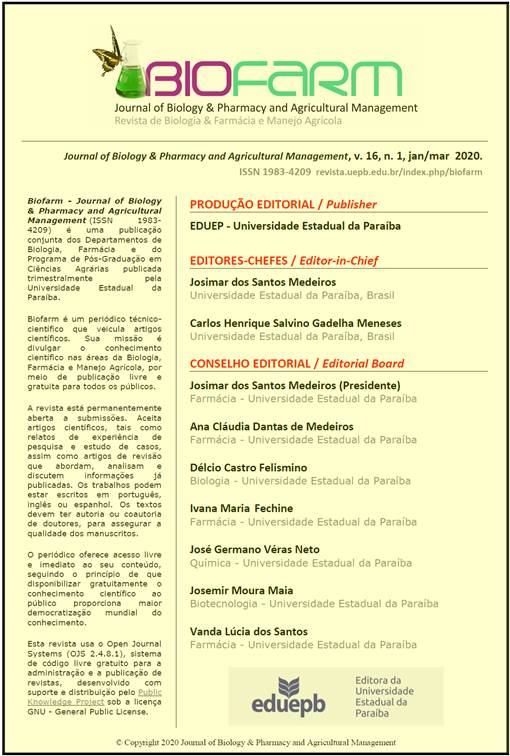PRODUÇÃO HIDROPÔNICA DE CULTIVARES DE ALFACE EM DUAS CONCENTRAÇÕES DA SOLUÇÃO NUTRITIVA
Abstract
Os produtores e pesquisadores da região Nordeste ainda necessitam de um maior número de dados sobre tecnologias de hidroponia. O objetivo foi avaliar a produção de cultivares de alface em sistema hidropônico com diferentes concentrações da solução nutritiva. O experimento seguiu delineamento em blocos casualizados no esquema fatorial 4x2, sendo os tratamentos representados por quatro cultivares de alface (1- Elba, 2- Cristina, 3- Mimosa Roxa, 4- Americana), duas concentrações da solução nutritiva (a- condutividade elétrica (CE) = 1,27 dS/m; b- condutividade elétrica (CE) = 1,7 dS/m) e quatro repetições. O cultivo hidropônico foi desenvolvido em casa de vegetação do tipo capela com orientação leste-oeste. Aos 44 dias após o semeio, foram analisadas as seguintes variáveis: número de folhas (folhas/planta), fitomassa fresca da folha, caule e raiz (g/planta), diâmetro (mm) e comprimento (mm) do caule. A cultivar Elba apresentou melhor adaptação, quando cultivada em sistema hidropônico, nas condições do agreste paraibano. A condutividade elétrica da solução nutritiva de 1,7 dS/m, promoveu melhor desenvolvimento da alface nas condições de cultivo hidropônico no agreste paraibano.
Downloads
Published
How to Cite
Issue
Section
License
Copyright (c) 2023 BIOFARM - Journal of Biology & Pharmacy and Agricultural Management

This work is licensed under a Creative Commons Attribution 4.0 International License.
Authors and co-authors retain copyright, but cede the right to first publication to the Journal of Biology & Pharmacy and Agricultural Management (BIOFARM).
Copyright encompasses exclusive rights to reproduce and deliver the article in all form and media, including reprints, photographs, microfilms and any other similar reproductions, as well as translations. The reproduction of any part of this journal, its storage in databases and its transmission by any form or media - such as electronic, electrostatic and mechanical copies, photocopies, recordings, magnetic media, etc. - will be allowed only with a written permission from the BIOFARM.
Articles published in BIOFARM will be Open-Access articles distributed under the terms and conditions of the Creative Commons Attribution License (CC BY). The copyright is retained by the author(s). BIOFARM will insert the following note at the end of the published text:
© 2023 by the authors; licensee BIOFARM, Campina Grande, Brazil. This article is an open access article distributed under the terms and conditions of the Creative Commons Attribution License (http://creativecommons.org/licenses/by/4.0/).


